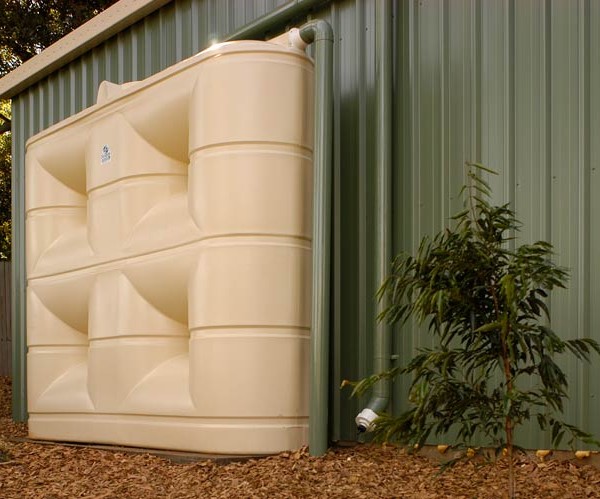Slimline Water Tanks: Space-Saving Solutions for Tiny Properties
Slimline Water Tanks: Space-Saving Solutions for Tiny Properties
Blog Article
Recognizing the Relevance of Rainwater Tanks in Drought-Prone Regions for Water Security
In areas at risk to extended droughts, the role of rain containers in reinforcing water security is a topic of expanding significance. As communities face the obstacles of water scarcity, understanding the relevance of these tanks exceeds simple collection of rainwater. Rainwater containers act as an important device in alleviating the impact of water scarcities by supplying a sustainable resource of water for numerous requirements. However, the real value of rain storage tanks extends much beyond plain storage; it incorporates resilience-building procedures and the promotion of lasting water conservation strategies. This diverse technique to water security warrants a closer assessment of the role rainwater containers play in making certain a reputable water throughout times of dry spell.
Advantages of Rain Containers
Using rain containers offers a lasting option for boosting water supply and improving water protection in household and industrial settings. One of the primary advantages of rain storage tanks is their capability to minimize reliance on mains supply of water. By capturing and saving rain that falls on rooftops, this different resource can be utilized for various non-potable purposes such as irrigation, purging bathrooms, and washing garments. This not just preserves treated drinking water however likewise reduces water costs for customers.

Rain Harvesting Strategies
Rain collecting strategies incorporate an array of methods created to successfully gather and keep rainwater for different purposes, adding to water conservation and sustainability. One usual strategy is the installment of roof catchment systems, where rainwater is collected from the roof covering of a structure and routed to a tank. This technique is relatively simple and cost-effective. An additional preferred method is using above-ground or underground storage space tanks to store rain for later usage. These storage tanks come in numerous dimensions and materials to suit various demands and can be attached to the existing plumbing system for easy gain access to.

Furthermore, rainfall gardens and permeable pavements are ingenious strategies that involve landscape design or paving surfaces in a manner that allows rain to percolate into the ground, renewing groundwater gets. Additionally, contour farming and terracing are farming techniques that assist catch rain and avoid soil disintegration in sloping surface. By carrying out these varied rain harvesting strategies, areas can improve water safety and resilience in drought-prone areas while advertising lasting water management practices.
Importance of Water Security
Ensuring reliable accessibility to tidy and sufficient water resources is critical for maintaining human wellness, financial advancement, and ecological wellness. Water safety and security is an important aspect of social durability, particularly in areas vulnerable to dry spells and water shortage. Adequate water security encompasses numerous measurements, consisting of schedule, quality, and access of water for residential, farming, commercial, and environmental needs.
Water security plays a critical function in advertising public wellness by decreasing the frequency of waterborne diseases and ensuring hygiene centers. Economically, water safety and security is crucial for farming productivity, commercial procedures, and overall financial development. Slimline water tanks. Water safety is very closely connected to environmental sustainability, as it sustains ecosystems, biodiversity, and general eco-friendly balance.
In drought-prone regions, water safety becomes also a lot more essential as a result of the increased danger of water shortages. Implementing techniques like rain harvesting, water recycling, and effective water management techniques can considerably boost water security in these areas. By focusing on water security, communities can much better stand up to the impacts of environment modification, population development, and other difficulties that intimidate water accessibility.
Enhancing Water Resilience
With raising worldwide water challenges, have a peek at these guys constructing resilience in water supply has become an essential emphasis for lasting advancement initiatives. Enhancing water durability entails carrying out strategies to make certain water accessibility and quality in the face of altering ecological problems, such as droughts, floods, and pollution.
One key aspect of improving water durability is promoting using rain tanks in drought-prone regions - Slimline water tanks. Rainwater this hyperlink tanks offer as an efficient methods of capturing and storing rain for later usage, reducing reliance on limited freshwater resources throughout dry periods. By incorporating rain harvesting systems right into water management strategies, areas can boost their capacity to withstand water deficiency and maintain water safety and security

Sustainable Water Preservation
In the middle of escalating water difficulties, the sensible monitoring of water resources through sustainable preservation methods is critical for ensuring long-term ecological stability and social wellness. Lasting water conservation entails the effective use of water sources to meet present needs without jeopardizing the capacity of future generations to satisfy their very own demands. By implementing methods such as rainwater harvesting, greywater recycling, and water-efficient innovations, neighborhoods can lower water wastage and relieve pressure on freshwater resources.
Furthermore, lasting water preservation practices add to ecosystem wellness by keeping adequate water levels in rivers, lakes, and marshes, supporting biodiversity, and protecting all-natural environments. These practices likewise play a crucial function in minimizing the impacts of climate change by assisting to adjust to changing precipitation patterns and water accessibility.

Verdict
In conclusion, rainwater storage tanks play an important function in enhancing water security and strength in drought-prone regions. By using rainwater harvesting strategies, neighborhoods can decrease their dependence on typical water sources and promote lasting water conservation techniques. my blog This not just helps minimize the effects of water shortage throughout dry spells but likewise adds to lasting water safety and security and resilience despite climate adjustment difficulties.
Report this page